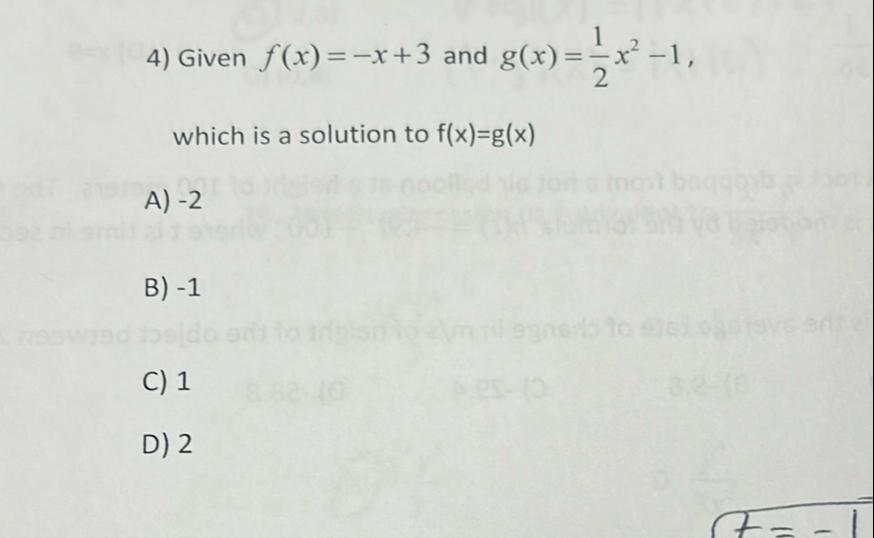AI tutor
Full solution
Q. Given and , which is a solution to A) B) C) D)
- Set Equation Equal: To find the solution to , we need to set the two functions equal to each other and solve for . So, we have the equation .
- Form Quadratic Equation: First, let's move all terms to one side of the equation to set it to zero and form a quadratic equation.We add and subtract from both sides to get:.
- Eliminate Fraction: To make the equation easier to solve, we can multiply every term by to get rid of the fraction:,which simplifies to:.
- Factor Quadratic Equation: Now, we need to factor the quadratic equation, if possible.The factors of that add up to are and .So, we can write the equation as:.
- Apply Zero Product Property: Next, we apply the zero product property, which states that if a product of two factors is zero, then at least one of the factors must be zero.So, we set each factor equal to zero: or .
- Solve for x: Solving each equation for x gives us the possible solutions: or .
- Check Answer Choices: We need to check which of these solutions is given in the answer choices.The choices are A) , B) , C) , D) .Only is in the answer choices, so is not a valid option for this problem.
- Verify Solution: Finally, we can verify that is indeed a solution by substituting it back into the original equations and to see if they are equal.For , we have .For , we have .Since , is a solution to .
More problems from Transformations of functions
QuestionGet tutor help
QuestionGet tutor help
QuestionGet tutor help
QuestionGet tutor help
QuestionGet tutor help

